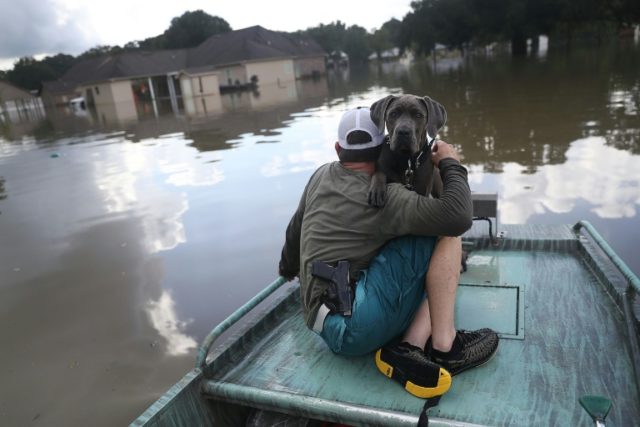Paris (AFP) – Large swathes of the United States could see a five-fold jump in the frequency of extreme downpours by century’s end due to climate change, according to a study released Monday.
Moreover, the intensity of those bouts could increase by about 70 percent, researchers reported in the journal Nature Climate Change.
That would mean that a storm dropping five centimetres (two inches) of water today would likely dump nine centimetres (3.5 inches) by 2100 if global warming continues unabated.
“These are huge increases,” said lead author Andreas Prein, a scientist at the US National Center for Atmospheric Research (NCAR) in Boulder, Colorado.
The most intense thunderstorm in a given season today would on average happen five times during the equivalent period in the future, with each storm as or more intense, he explained in a statement.
Summertime downpours are predicted to multiply across the continental United States, but the highly-populated Gulf and Atlantic coasts, along with much of the Southwest, would be hit especially hard.
More frequent and intense storms “would cause major challenges for existing infrastructure systems” hammered by flooding, landslides and debris flows, the researchers concluded.
The long-term link between global warming and wetter weather is well established: when the atmosphere warms, it is able to hold more water, causing heavier rains.
But not all regions in the US, or elsewhere, will become wetter with global warming — indeed, climate change is set to enhance droughts in some areas as well.
But even in part of the US forecast to become drier on average, such as the Midwest, the occasional summer downpour could also be more extreme.
The study presumes a “business-as-usual” scenario in which average global temperatures rise a devastating five degrees Celsius (nine degrees Fahrenheit) over pre-industrial levels.
With 1 C (1.8 F) of warming so far, the world has already seen an upsurge in extreme weather, including droughts, superstorms, heatwaves and coastal flooding boosted by rising seas.
The study, using a new dataset based on weather records between 2000 and 2013, achieved for the first time a resolution fine enough to simulate individual storms.
The simulations required a full year of computer time to run, with the calculations performed at the NCAR-Wyoming Supercomputing Center.

COMMENTS
Please let us know if you're having issues with commenting.